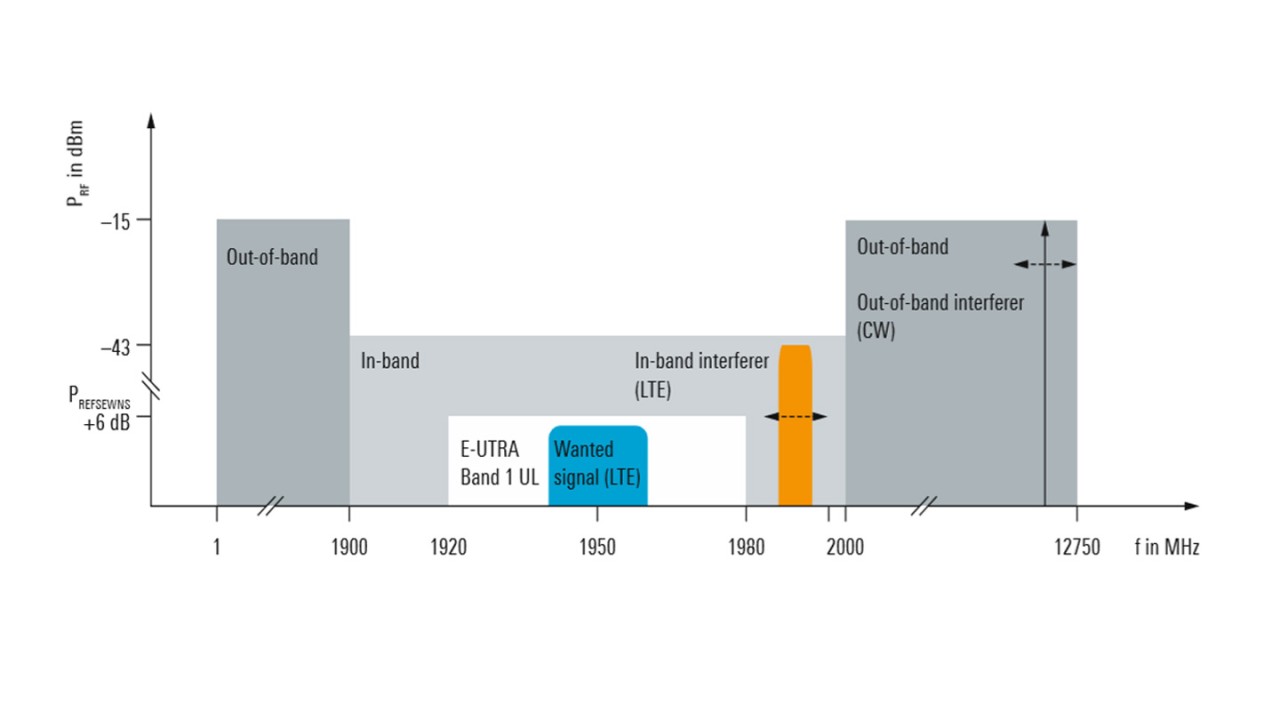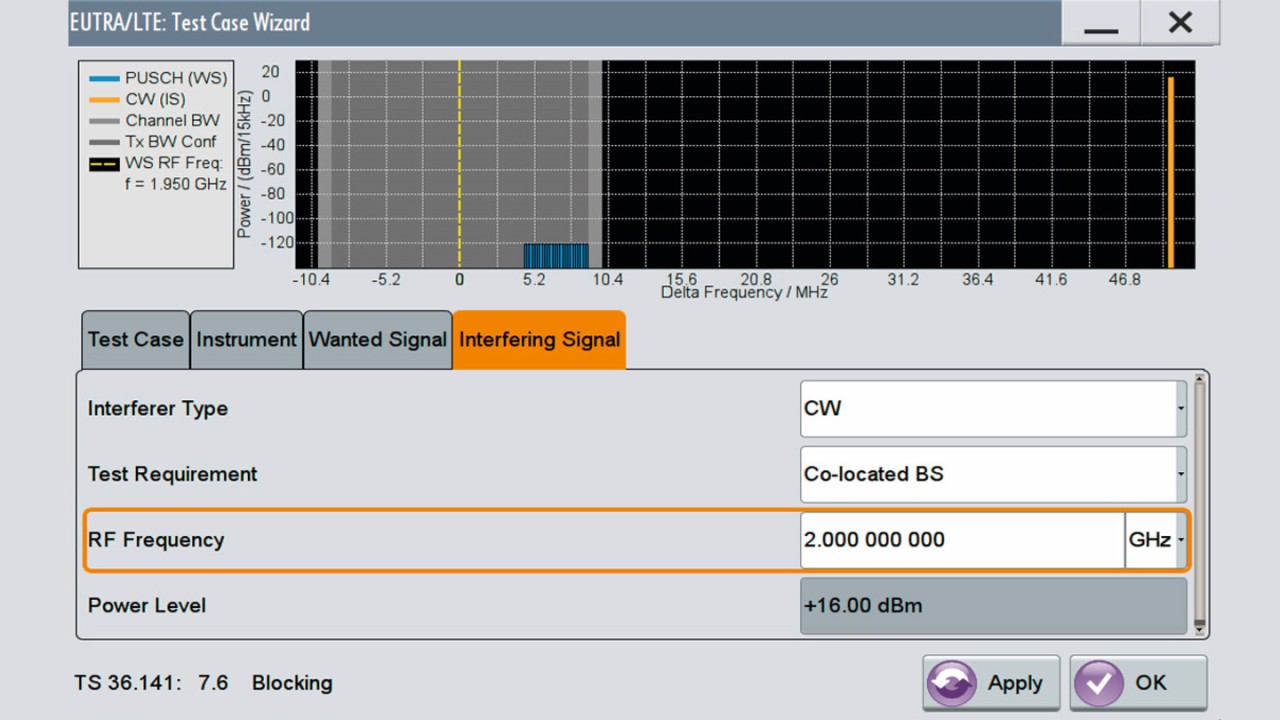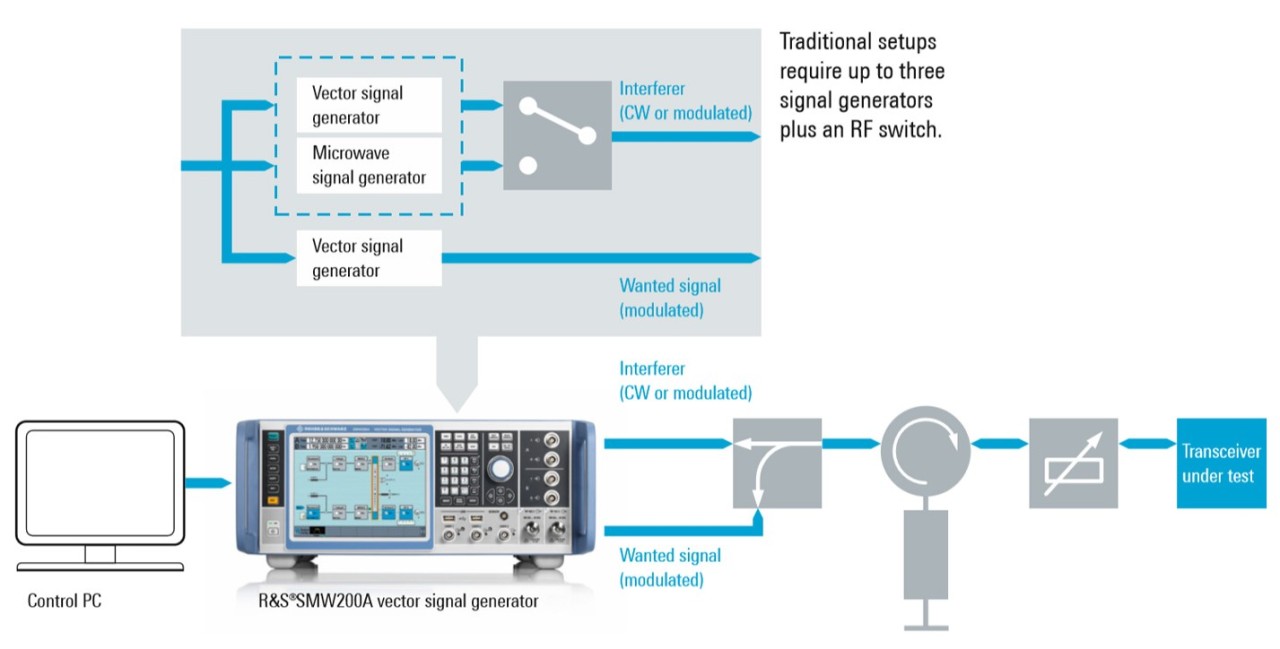Efficient testing of blocking characteristics
Its dual-path concept and high-power signal generation up to 20 GHz make the R&S®SMW200A vector signal generator ideal for efficient testing of blocking characteristics

Its dual-path concept and high-power signal generation up to 20 GHz make the R&S®SMW200A vector signal generator ideal for efficient testing of blocking characteristics


The blocking characteristics of wireless receivers (e.g. mobile devices or base stations) describe the receiver’s ability to receive a wanted signal, the reference channel, in the presence of an interfering signal. These receiver characteristics, which are also referred to as the desensitization performance, have considerable impact on receiver sensitivity, and consequently on cell coverage. This is why nearly all wireless (conformance) test standards specify blocking characteristics test cases.
Blocking test parameters strongly depend on the wireless standard (such as LTE) being tested and on the device type. The test principles are basically identical: A vector signal generator provides the required wanted signal to the receiver or transceiver under test at a certain power level and frequency. A second generator delivers the specified modulated and unmodulated (CW) interfering signals, typically at a significantly higher power level, to the receiver input. Often, even a third microwave generator is required to provide the high-frequency CW interferer in the upper out-of-band area as specified in the test cases.
Generally, the interferer signal must cover a wide frequency range up to a maximum frequency of 12.75 GHz, using a specified step size. The interferer frequency range is normally split up into an in-band area and out-of-band areas, which range from far below to far above the operating band.
The interfering signal’s impact on receiver performance is evaluated by measuring the data throughput or the bit/block error rate for every single interferer frequency step. Due to the huge amount of interferer frequency steps, these tests are normally fully automated. The traditional approach uses up to three signal generators to provide the wanted and interferer signals over a wide frequency range and at high power levels. This makes the test setup complex and time-consuming.


The R&S®SMW200A vector signal generator with its dual RF path concept is a compact solution for highly efficient testing of blocking characteristics for wireless receivers and transceivers in conformance with standards (e.g. LTE, WCDMA and GSM/EDGE) or customer-specific requirements. The modulated wanted signal is provided on an RF path of the R&S®SMW200A. The second RF path is used to generate the specified interfering signals. When the R&S®SMW200A is equipped with the 12.75 GHz or 20 GHz hardware option, it generates the typically modulated in-band interfering signal and the required CW interferers for the lower and upper out-of-band areas, even up to 12.75 GHz or 20 GHz. As a result, it is possible to cover the entire blocking frequency range (e.g. from 1 MHz to 12.75 GHz as specified for LTE base station tests) with a single generator. Some blocking characteristics tests, such as the co-location blocking test, also require high-power interfering signals. With a specified output power of +18 dBm, the R&S®SMW200A is able to support such high-power RF signals, eliminating the need for an additional external power amplifier.


R&S®SMW200A LTE test case wizard for blocking tests.
Standard-compliant blocking conformance tests for LTE and WCDMA base stations can be remarkably simplified by test case wizards, which are an integral part of the related digital standard software option. The wizards automatically configure all wanted and interfering signal parameters and provide a graphical overview of the generated test signals.
The combination of high-power signal generation up to 20 GHz with excellent spectral purity and low level uncertainty makes the R&S®SMW200A an efficient one-box solution for performing blocking characteristics tests on your wireless receivers and transceivers

